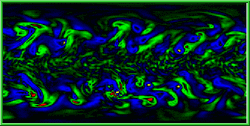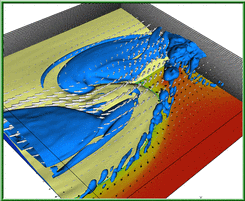gfdl's home page > research > weather and atmospheric dynamics
Weather and Atmospheric Dynamics
Research StaffBender, MorrisGarner, Stephen Held, Isaac Lin, Shian-Jiann Marchok, Timothy Orlanski, Isidoro Polinsky, Larry Williams, Gareth Wyman, Bruce |
Princeton University (AOS)Chen, GangChun-Chieh, Wu Khare, Shree Marinov, Irina Reichler, Thomas Riviere, Gwendal Smith-Mrowiec, Agnieszka |
ContractorPincus, RobertTuleya, Robert Zurita-Gotor, Pablo |
 |
||
 |
Improve our understanding of atmospheric circulations ranging in scale from hurricanes to extratropical storms and the general circulation, with an emphasis on extreme weather events and the interplay between weather phenomena and climate variability and change, using high resolution atmospheric modeling as the central tool. |
 |

|
||
Current Research
Hurricane modeling:
Continue to improve the GFDL hurricane forecast system and its operational implementations. Construct high-resolution non-hydrostatic hurricane models to study the fundamental dynamics of genesis, structure, and motion. Investigate hurricane sensitivity to climate change using new models as they are developed.
Extratropical storms and storm tracks:
Develop high resolution non-hydrostatic models of the detailed structure of extratropical storms and storm tracks, aimed in particular at a more definitive understanding of the effects of moist convection on storm structure and evolution. Use these simulations to evaluate parameterizations in global climate models. Study the seasonal cycle and interannual variability of the storm tracks and their sensitivity to climate change, placing particular emphasis on extreme extratropical weather.
Cloud-resolving models of tropical circulation:
Develop non-hydrostatic models of Walker, Hadley, and monsoonal circulations to study the interactions between convection and the tropical general circulation and to evaluate parameterizations in global climate models&
High resolution global modeling:
Study the effects of increasing resolution in global atmospheric models, focusing on climate simulation in such regions as the Sahel, the Arctic, the U.S., and on simulation of the distribution of tropical storms. Use these models in "snapshot" mode to study regional climate change, using boundary conditions from lower resolution climate models. As resources allow, begin experimentation with global non-hydrostatic models.
General Circulation Dynamics:
Experiment with a variety of idealized general circulation models to develop our understanding of the atmospheric climate and help optimize the laboratory's atmospheric model development efforts, with an emphasis on the interplay between the atmospheric hydrologic cycle and the general circulation.
